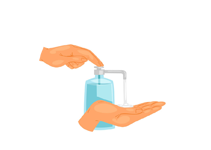Clofazimine
Clofazimine is a medication primarily used to treat leprosy (Hansen's disease) and other chronic bacterial infections. It is an antimicrobial agent that works by binding to bacterial DNA and inhibiting bacterial replication, thus helping control the spread of infections. Clofazimine is typically used in combination with other drugs to treat leprosy and may also be prescribed for certain skin conditions caused by bacterial infections. It is important to follow the prescribed dosage and complete the full course of treatment to ensure effectiveness and prevent resistance.
Uses of Clofazimine
- Treatment of leprosy (Hansen's disease)
- Management of certain chronic bacterial infections
- Treatment of skin conditions caused by bacterial infections
How Clofazimine Works
Clofazimine works by binding to bacterial DNA, preventing the replication of bacteria. It has both bactericidal and bacteriostatic properties, meaning it can kill bacteria or stop their growth. This mechanism of action is especially effective against Mycobacterium leprae, the bacteria responsible for leprosy. Clofazimine also has anti-inflammatory properties, which can help alleviate the symptoms associated with chronic skin conditions.
Benefits of Clofazimine
- Effectively treats leprosy (Hansen's disease) when used in combination with other medications
- Helps manage chronic bacterial infections and certain skin conditions
- Reduces inflammation associated with bacterial skin conditions
- Improves skin health and reduces lesions caused by leprosy
How to Take Clofazimine
Clofazimine is typically taken orally in the form of capsules. The dosage will depend on the condition being treated and the individual's response to the medication. It is usually taken with food to improve absorption and reduce gastrointestinal discomfort. It's important to follow your healthcare provider's instructions and complete the full course of treatment, even if symptoms improve before the medication is finished.
Types of Dosage Available
- Oral capsules containing Clofazimine
Side Effects of Clofazimine
- Discoloration of the skin (a reddish-brown tint)
- Gastrointestinal issues such as nausea, vomiting, or abdominal pain
- Dry skin or itching
- Fatigue or weakness
- In rare cases, eye problems such as irritation or dryness
Safety Advice
- Follow the prescribed dosage to avoid potential side effects and ensure effectiveness
- Consult your healthcare provider if you have any pre-existing conditions, especially liver or kidney problems
- Discontinue use and seek medical attention if you experience severe side effects, such as vision changes or severe allergic reactions
- Pregnant or breastfeeding women should consult their doctor before taking Clofazimine
Frequently Asked Questions (FAQs)
Q. What is Clofazimine used for?
A. Clofazimine is primarily used to treat leprosy (Hansen's disease) and other chronic bacterial infections. It may also be used for certain skin conditions caused by bacterial infections.
Q. Can Clofazimine cause skin discoloration?
A. Yes, a common side effect of Clofazimine is discoloration of the skin, which may appear as a reddish-brown tint. This is typically harmless and reversible after discontinuing the medication.
Q. How should I take Clofazimine?
A. Clofazimine is usually taken orally in capsule form. Follow your healthcare provider's instructions for the correct dosage and take it with food to reduce gastrointestinal discomfort.
Q. Are there any serious side effects of Clofazimine?
A. Serious side effects are rare but may include vision problems or severe allergic reactions. If you experience any concerning symptoms, contact your healthcare provider immediately.
Q. Can Clofazimine be used during pregnancy?
A. Pregnant or breastfeeding women should consult their doctor before taking Clofazimine, as its safety during pregnancy has not been fully established.
Download India's most affordable pharmacy app
- Compare with medicine prices
- Save upto 90% on your medicine bills

Temperature Controlled storage and delivery

Regular Sanitization

Disinfected Packaging














 Added!
Added!